26 Aug Wood Carving: Info and Tips
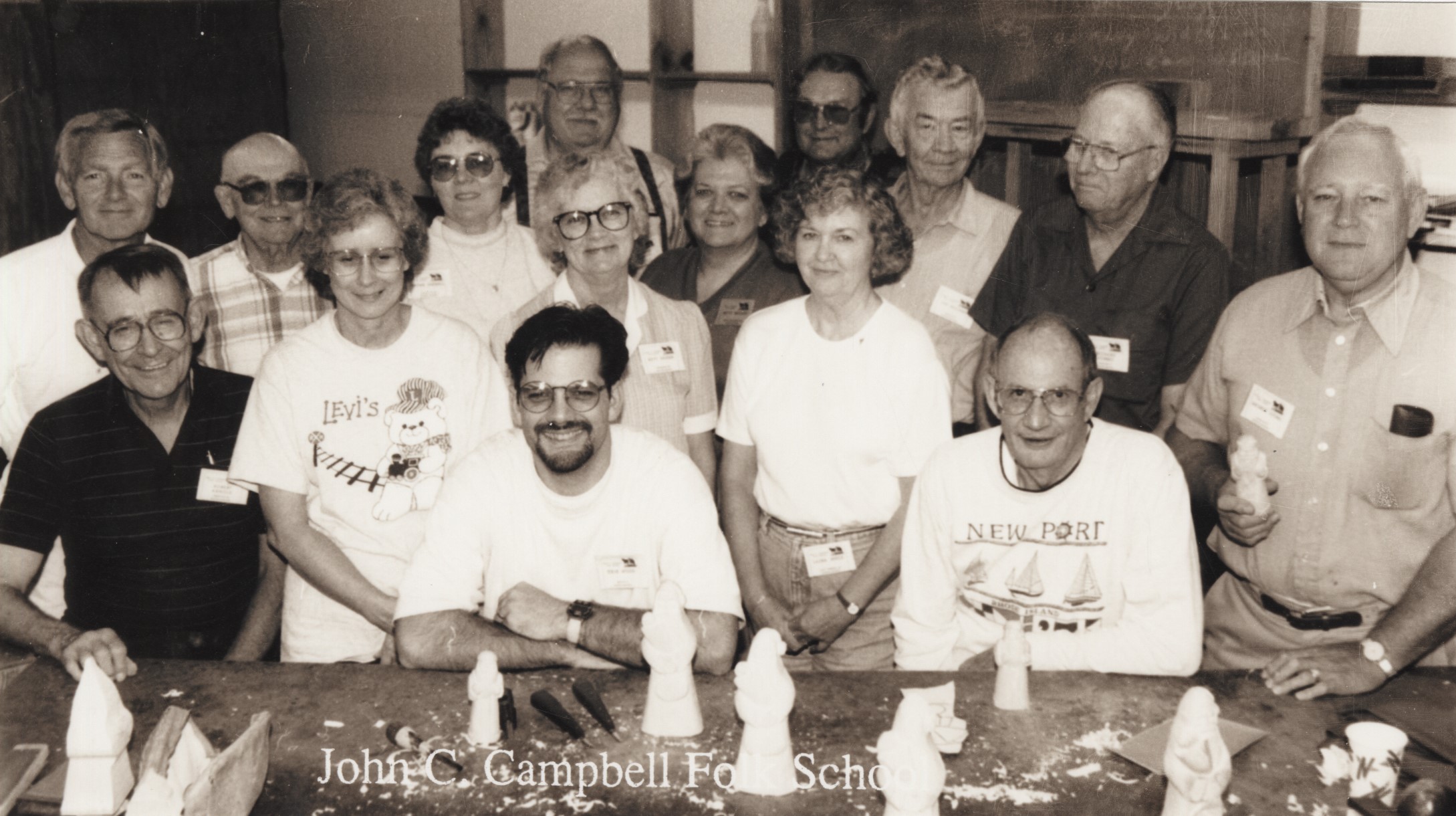
The ancient craft of wood carving has shaped human history and culture for millennia. A beautiful and tactile medium of expression, wood carving transcends time and continues to be practiced even in the digital age. In this article, we’ll explore the history of wood carving, its contemporary significance, various styles and techniques, and essential tools and materials. We’ll also provide helpful guidance for beginners and point you to our top-notch wood carving classes here at the John C. Campbell Folk School.
The History of Wood Carving
Wood carving is one of the oldest crafts known to humanity, with its origins tracing back to the Stone Age. Early humans carved wood for practical purposes such as tools and utensils, and over time, for decorative and artistic expressions. Ancient civilizations like the Egyptians and Greeks elevated wood carving to create intricate religious and cultural artifacts. In the Middle Ages, it flourished in Europe as an essential component of architectural designs, particularly in churches and cathedrals.
Today, wood carving remains a vibrant art form, reflecting cultural heritages and personal creativity. It’s a way to connect with history, nature, and art. Modern wood carvers continue to preserve traditional methods while also embracing new techniques and styles, making wood carving an ever-evolving craft.
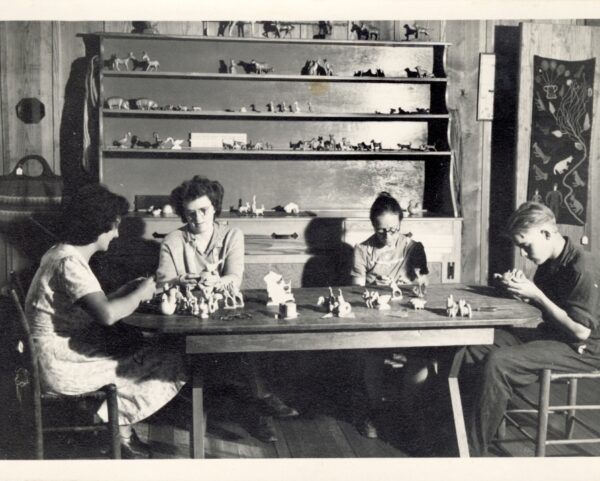
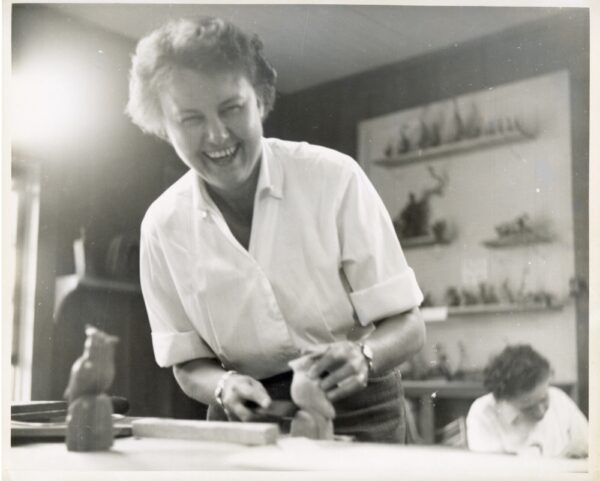
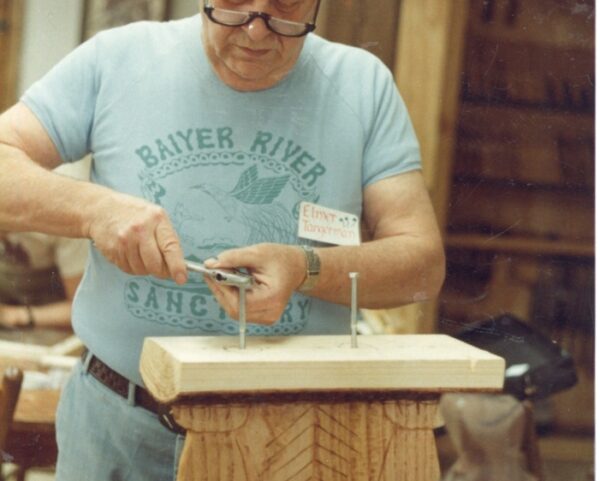
Types of Wood Carving
There are several types of wood carving, each with its unique characteristics and techniques:
- Relief carving: This is the art of carving figures into wood, leaving a raised image. It ranges from low relief (bas-relief) to high relief, where the elements strongly stand out from the background.
- Chip carving: This process involves chipping away pieces of wood to create patterns and designs, often geometric in nature.
- Whittling: The simplest form of wood carving, whittling is typically done with a knife, and is used to produce figurines and decorative pieces.
- Carving in the round: This is three-dimensional carving, creating lifelike figures and objects.
Wood Carving Tools and Supplies
To start carving, you’ll need specific tools and materials. Basic wood carving equipment includes:
- Carving knives: Essential for detailed work and whittling.
- Gouges: Curved tools that scoop out the wood, used in relief and round carving.
- Chisels: Used for straight cuts and lines, vital for all types of carving.
- Mallets: For driving chisels deeper into the wood.
- Wood: Softwoods like basswood and pine are great for beginners, while hardwoods like oak and walnut offer a challenge with beautiful results.
The Wood Carving Process
The general process of wood carving involves several stages:
- Choosing wood: Select the right type and piece of wood for your project.
- Designing: Plan your design, considering the wood grain and any potential flaws in the wood.
- Roughing out: Remove large sections of unnecessary wood to reveal the basic shape.
- Detailing: Add finer details and textures to bring your carving to life.
- Finishing: Sand, paint, or varnish your piece to protect it and enhance its appearance.
Tips for Wood Carving Beginners
As a beginner, it’s essential to start with the basics:
- Start small: Begin with simple projects to build your skills and confidence.
- Learn to sharpen: Sharp tools make carving easier and safer. Practice sharpening your tools regularly.
- Understand wood grain: Wood grain affects how the wood will react to your tools. Learn to read and work with the grain, not against it.
- Take your time: Wood carving can be a lengthy — even meditative — process. Don’t rush; enjoy the journey of your creation.
- Safety first: Always carve away from your body and use protective gloves if necessary.
Explore Wood Carving at the John C. Campbell Folk School
Interested in getting your first taste of wood carving, or in taking your skills to the next level? Here at the John C. Campbell Folk School, we offer a range of wood carving classes suited for all skill levels. From the basics of whittling and chip carving to advanced techniques in relief and in-the-round carving, there’s something for everyone. Experienced instructors guide you through hands-on learning in a supportive and creative environment.
Discover the joy of transforming a simple piece of wood into a work of art. Whether you’re looking to start a new hobby, enhance your skills, or connect with a community of like-minded artisans, the Folk School is the perfect place to start. Join us and keep the timeless art of wood carving alive for generations to come.



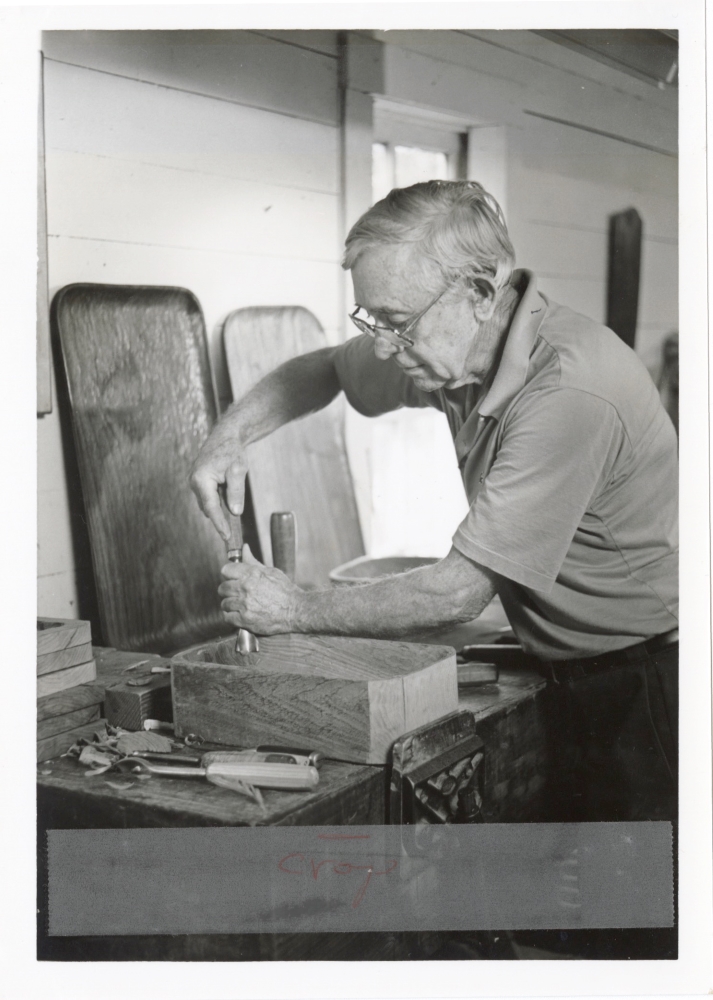
No Comments